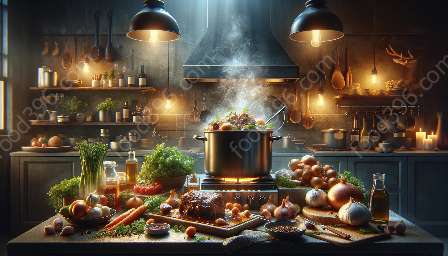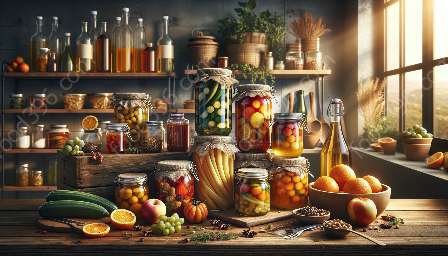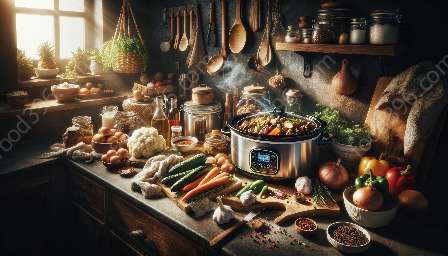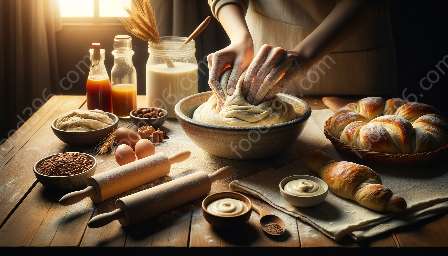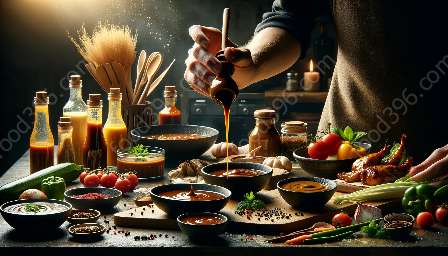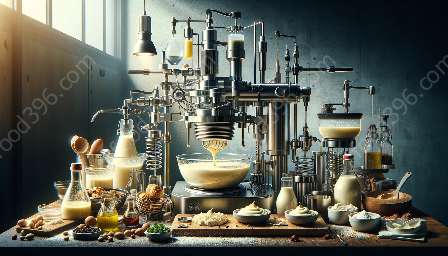Introduction
Dough making is an essential skill in the world of food preparation techniques. In this comprehensive guide, we will explore the intricacies of dough making, its relevance in the broader context of food and drink, and the techniques involved in creating mouthwatering dough-based delicacies.
Understanding Dough
Dough is a fundamental element in the culinary world, serving as the base for a wide range of dishes and beverages. Understanding the composition and characteristics of dough is crucial for mastering the art of dough making. Dough typically consists of flour, water, and other ingredients such as yeast, salt, and sugar. The variations in dough recipes give rise to an array of textures and flavors, making it a versatile medium for culinary exploration.
The Science Behind Dough Making
Dough making is not merely a task of mixing ingredients; it involves a scientific understanding of the reactions and transformations that take place during the preparation process. The interactions between flour proteins, water, and other components contribute to the elasticity, structure, and rise of the dough. By delving into the science of dough making, one gains insights into optimizing the texture and flavor of the final product.
Types of Dough
Dough comes in various forms, each lending itself to different culinary applications. From the pliability of pizza dough to the delicate layers of puff pastry, understanding the characteristics of different types of dough is essential for creating diverse culinary masterpieces. Common types of dough include:
- Yeast Dough: Known for its light and airy texture, yeast dough is used in bread, rolls, and other baked goods that require a rise.
- Shortcrust Dough: With its crumbly texture, shortcrust dough is ideal for savory pies, quiches, and tarts.
- Choux Dough: This light and airy dough is used in the creation of pastries such as eclairs and profiteroles.
- Filo Dough: Filo dough, characterized by its thin and flaky layers, is commonly used in Mediterranean and Middle Eastern pastries.
Food Preparation Techniques with Dough
Exploring the world of food preparation techniques reveals the myriad ways in which dough can be transformed into delectable dishes and drinks. Some common food preparation techniques involving dough include:
- Kneading: Kneading is a crucial step in dough making, responsible for developing the gluten in the dough and ensuring proper texture and rise.
- Rolling and Shaping: Whether it's shaping bread loaves, creating intricate pastry designs, or forming dumplings, rolling and shaping are integral techniques in dough-based food preparation.
- Rising and Proofing: Allowing the dough to rise and proof is essential for achieving the desired lightness and texture in baked goods.
- Frying and Baking: The methods of frying and baking provide different culinary outcomes for dough-based dishes, from crispy fritters to golden-brown pastries.
From Dough to Delicacy: Culinary Creations
The versatility of dough opens up a world of culinary possibilities. Whether it's the comforting aroma of freshly baked bread, the flaky layers of a savory pie, or the indulgence of a sweet pastry, dough-based creations hold a special place in the realm of food and drink. Here are some popular dough-based delicacies:
- Artisan Bread: The art of bread making involves harnessing the power of yeast and flour to create rustic loaves with hearty crusts and tender interiors.
- Pizza: Pizza dough serves as the canvas for a multitude of topping combinations, from classic Margherita to adventurous gourmet variations.
- Pastries: Delicate pastries, such as croissants and danishes, showcase the skills of dough making with their flaky layers and rich fillings.
- Empanadas: These savory turnovers feature a variety of fillings encased in a golden-brown, flaky crust made from traditional shortcrust dough.
The Art of Dough Making: A Culinary Journey
Embarking on the art of dough making is a journey filled with exploration, creativity, and the satisfaction of crafting delicious food and drink. With a firm grasp of the science and techniques behind dough making, one can take pleasure in creating culinary delights that captivate the senses and bring joy to those who partake in them.
In conclusion, mastering the art of dough making not only enhances one's culinary prowess but also fosters an appreciation for the craftsmanship and tradition behind the food and drink we cherish. From the humble beginnings of flour and water to the wondrous creations that emerge from the oven, dough making invites us to embrace the time-honored rituals of food preparation and savor the wonders of taste and texture.






